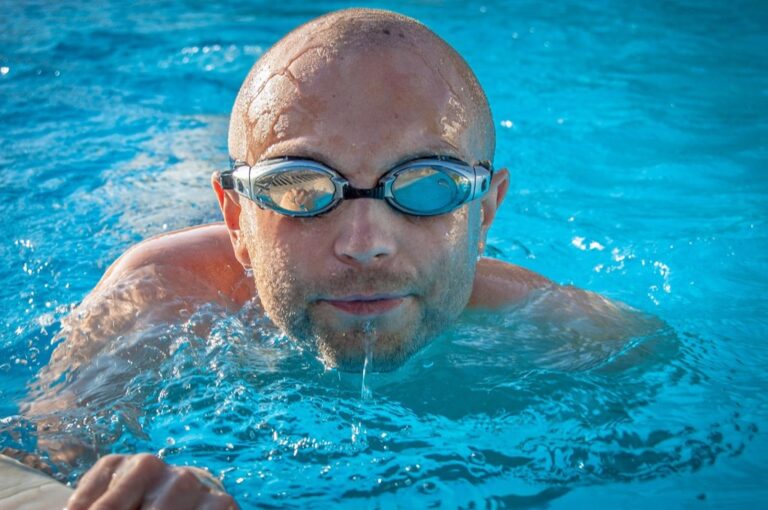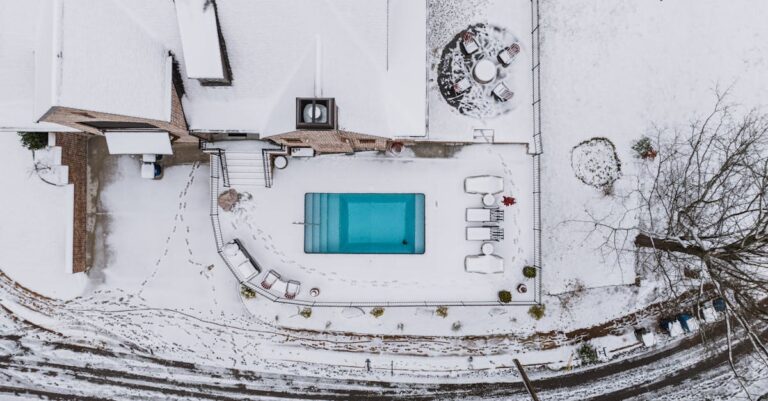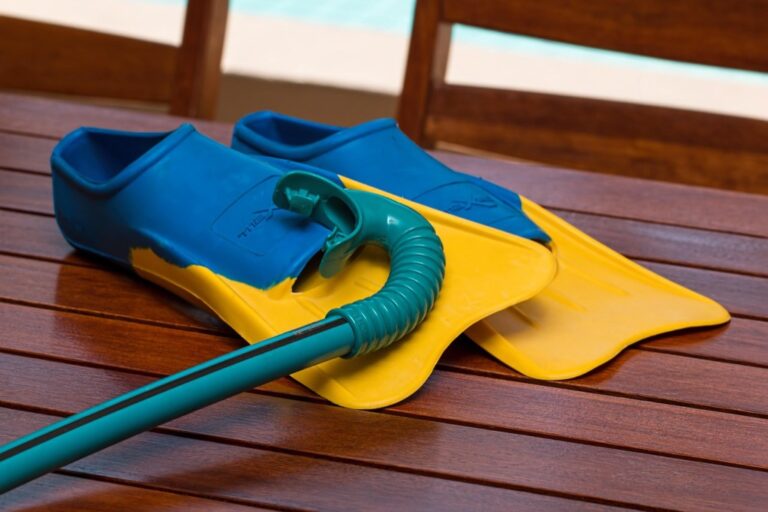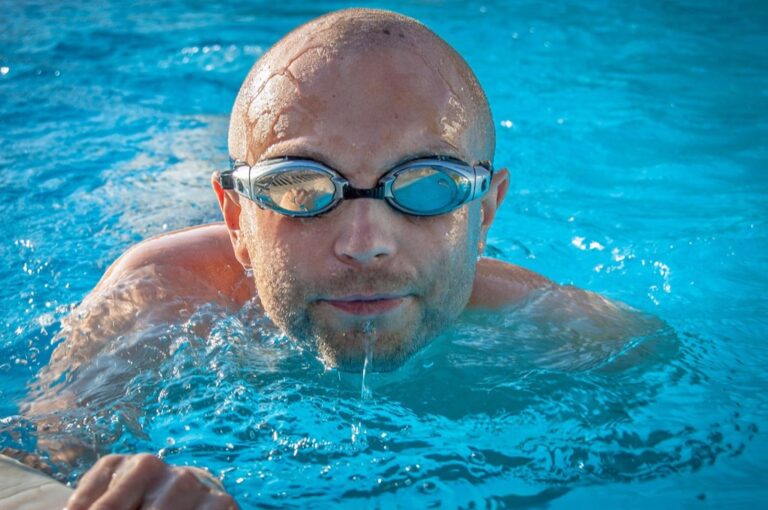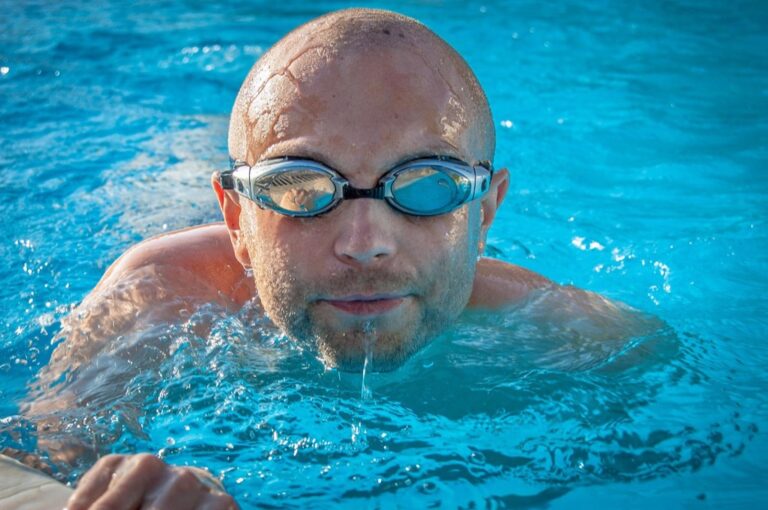7 Ways Pool Automation Conserves Water That Protect Our Environment
Discover 7 innovative pool automation technologies that help conserve water while maintaining your swimming pool, from smart level controllers to leak detection systems that save thousands of gallons annually.
In today’s environmentally conscious world, pool owners face increasing pressure to minimize water waste while still enjoying their backyard oasis. Modern pool automation systems offer smart solutions that not only simplify maintenance but significantly reduce water consumption through precise control and monitoring capabilities.
With drought conditions affecting many regions and water conservation becoming a priority, implementing the right automation technology can transform your pool from a resource drain into an eco-friendly feature that saves thousands of gallons annually.
Disclosure: As an Amazon Associate, this site earns from qualifying purchases. Thank you!
Understanding The Water Conservation Crisis In Pool Maintenance
Pool owners face mounting pressure as water scarcity becomes a critical environmental issue. The average swimming pool loses 25,000 gallons annually through evaporation alone, with additional thousands wasted through inefficient backwashing, leaks, and overfilling. Many regions now implement strict water usage restrictions that directly impact pool maintenance practices, forcing owners to find sustainable solutions or face penalties.
Traditional pool maintenance methods typically waste water through excessive backwashing, imprecise chemical treatments requiring water replacement, and manual operations that lack precision. In drought-prone areas like California and Arizona, these inefficiencies have become financially and environmentally unsustainable, highlighting the urgent need for smarter water management systems in residential pools.
Smart Water Level Controllers: Preventing Overflow And Evaporation
How Automated Sensors Detect Optimal Water Levels
Smart water level controllers use ultrasonic or float sensors to continuously monitor your pool’s water level with precision down to fractions of an inch. These automated systems detect when water falls below the preset threshold due to evaporation or use. Once programmed, sensors communicate with your pool’s automation system, triggering water replenishment only when necessary—eliminating guesswork and maintaining perfect levels 24/7.
Reducing Water Loss From Overfilling
Overfilling your pool wastes thousands of gallons annually as excess water simply spills over and drains away. Smart controllers prevent this by automatically shutting off water flow once ideal levels are reached. The precision of these systems means you’ll add exactly what’s needed—no more, no less. Many controllers also feature customizable settings that account for rainfall forecasts, further reducing unnecessary water use during wet weather periods.
Automated Pool Covers: Minimizing Evaporation Loss
The Science Behind Evaporation Prevention
Automated pool covers create a physical barrier that dramatically reduces evaporation rates by up to 95%. Water molecules constantly escape from your pool’s surface, but covers prevent this natural process by blocking water vapor movement. The sealed environment maintains humidity directly above the water surface, creating equilibrium that halts the evaporation cycle. This simple physics-based solution saves thousands of gallons annually without requiring chemical additives or complex technology.
Energy Conservation Benefits Of Covered Pools
Automated pool covers don’t just save water—they significantly reduce energy consumption too. By maintaining water temperature, covers minimize heat loss that typically drives up heating costs by 50-70%. Your pool heater works less frequently when evaporative cooling is prevented, resulting in average energy savings of $50-150 monthly. This dual efficiency makes automated covers one of the smartest investments for eco-conscious pool owners seeking to reduce both water and carbon footprints.
Precise Chemical Management Systems: Reducing Backwashing Needs
How Balanced Water Chemistry Extends Filter Cycles
Maintaining proper chemical balance dramatically extends the time between necessary filter backwashing. When pH, chlorine, and alkalinity levels stay consistently balanced, particles remain suspended rather than clumping together to clog filters. Automated systems monitor these levels continuously, making micro-adjustments that prevent the rapid filter loading that typically triggers excessive backwashing cycles and saves thousands of gallons annually.
Automated Chemical Dispensers For Optimal Water Quality
Automated chemical dispensers deliver precise amounts of chemicals exactly when needed, eliminating the over-treatment common with manual methods. These systems monitor water quality in real-time, responding to actual conditions rather than predetermined schedules. By preventing chemical imbalances that lead to cloudy water and algae growth, automated dispensers reduce the frequency of backwashing required to maintain clarity, cutting water consumption by up to 30% compared to traditional maintenance approaches.
Leak Detection Technology: Identifying Water Loss Before It Worsens
Early Warning Systems For Pool Structure Issues
Modern pool automation systems include sophisticated sensors that detect microscopic leaks before they become major problems. These sensors monitor water pressure, flow rates, and structural integrity throughout your pool system. When unusual patterns emerge, you’ll receive immediate alerts through your smartphone app, allowing for quick intervention. Early detection can prevent the loss of thousands of gallons that typically occurs when small leaks go unnoticed for weeks.
How Automation Tracks Unusual Water Consumption Patterns
Automated pool systems establish baseline water consumption patterns specific to your pool’s unique characteristics. The technology continuously monitors daily water usage and compares it against this established baseline. When consumption spikes occur without explanation (like recent backwashing or heavy swimming use), the system flags potential leak issues. Advanced systems can even differentiate between normal evaporation rates and actual water loss, pinpointing exactly where leaks might be occurring in your filtration system, plumbing, or pool shell.
Weather-Responsive Programming: Adjusting Operations Based On Environmental Conditions
Modern pool automation systems now leverage real-time weather data to make intelligent adjustments to pool operations, significantly reducing water waste. These smart systems respond dynamically to changing environmental conditions, optimizing water usage based on current and forecasted weather patterns.
Rain Sensors That Prevent Unnecessary Filling
Rain sensors integrate with your pool automation system to detect precipitation and automatically adjust water levels accordingly. These sensors immediately suspend automatic filling operations when rain is detected, preventing wasteful overfilling and saving up to 500 gallons per rainy day. Many advanced systems even calculate expected rainfall volume to pre-emptively lower pool levels before storms.
Wind-Based Adjustments To Reduce Evaporation
High winds dramatically accelerate water evaporation rates, sometimes increasing water loss by 300% compared to calm conditions. Smart automation systems monitor wind speed and direction to automatically deploy pool covers during windy periods. They also lower water features and fountain operations during gusts, reducing spray and splash evaporation that can waste gallons per hour during breezy days.
Efficient Filtration Scheduling: Optimizing Backwash Cycles
Pressure-Based Cleaning Versus Time-Based Cleaning
Modern pool automation systems prioritize pressure-based backwashing instead of rigid time-based schedules. Your filtration system monitors actual filter pressure, triggering backwash cycles only when genuinely needed rather than on arbitrary dates. This intelligent approach ensures you’re not wasting water on unnecessary backwashes when your filter is still operating efficiently.
Water Savings From Smart Filtration Management
Smart filtration management can reduce backwash water consumption by 25-50% compared to manual scheduling. Your automated system tracks precise pressure differentials to determine when backwashing is truly necessary, eliminating the thousands of gallons typically wasted through over-frequent cleaning. Many systems also feature abbreviated backwash cycles that use just enough water to clean filters effectively while conserving this precious resource.
Conclusion: The Future Of Water Conservation Through Pool Automation
Pool automation represents a significant leap forward in responsible water management for pool owners. By implementing these seven smart technologies you’re not just saving time and effort but contributing meaningfully to water conservation efforts.
The combination of smart water level controllers automated covers precise chemical management leak detection weather-responsive programming and efficient filtration creates a comprehensive system that dramatically reduces waste.
As water restrictions tighten across drought-prone regions investing in automation isn’t just environmentally responsible—it’s financially prudent. The thousands of gallons saved annually translate to lower utility bills and fewer maintenance headaches while ensuring your pool remains a sustainable luxury for years to come.
Frequently Asked Questions
How much water does the average swimming pool lose annually?
The average swimming pool loses approximately 25,000 gallons of water annually through evaporation alone. Additional water waste occurs through inefficient backwashing, leaks, and overfilling. This significant water loss is becoming increasingly problematic as many regions enforce strict water usage restrictions on pool owners.
What are smart water level controllers and how do they help?
Smart water level controllers use ultrasonic or float sensors to monitor pool water levels with precision. They trigger water replenishment only when necessary and automatically shut off water flow once ideal levels are reached. These systems eliminate guesswork, prevent wasteful overfilling, and can be customized to consider rainfall forecasts, saving thousands of gallons annually.
How effective are automated pool covers at reducing water waste?
Automated pool covers reduce evaporation rates by up to 95% by creating a physical barrier that prevents water molecules from escaping. This physics-based solution saves thousands of gallons annually without requiring chemical additives. Additionally, these covers conserve energy by maintaining water temperature, reducing heating costs by 50-70%.
How do automated chemical management systems save water?
Automated chemical dispensers deliver precise amounts of chemicals in real-time, maintaining balanced water chemistry and extending filter cycles. This prevents rapid clogging and reduces the need for frequent backwashing. Compared to traditional maintenance methods, these systems can cut water consumption by up to 30%.
What technologies help detect pool leaks?
Modern pool automation systems include sophisticated sensors that monitor water pressure, flow rates, and structural integrity to provide early warnings for potential leaks. These systems establish baseline consumption patterns and track unusual spikes, differentiating between normal evaporation and actual leaks to pinpoint issues in filtration, plumbing, or the pool shell.
How do weather-responsive systems optimize pool water management?
Weather-responsive automation systems use real-time data to adjust pool operations. Rain sensors detect precipitation and automatically adjust water levels, saving up to 500 gallons per rainy day. Wind sensors can trigger pool covers during high winds to reduce evaporation. These smart integrations enhance efficiency and sustainability in pool management.
What is efficient filtration scheduling and how does it reduce water waste?
Efficient filtration scheduling shifts from rigid time-based backwashing to pressure-based cleaning. Backwash cycles are triggered only when necessary based on actual filter pressure, preventing water waste from unnecessary cleanings. This smart filtration management can reduce backwash water consumption by 25-50% compared to manual scheduling.



